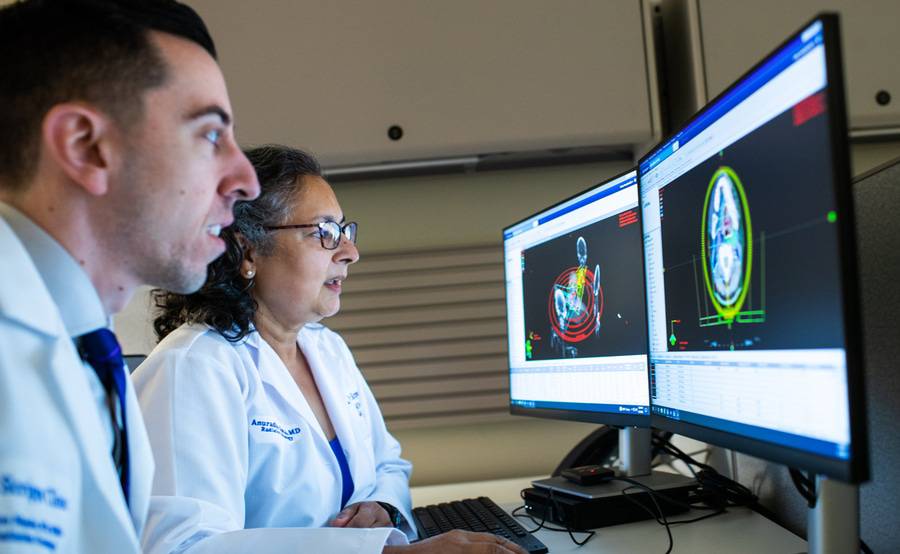Types of Radiation Therapy
Comprehensive radiation therapy treatment in San Diego

Drs. Shane Mesko and Anuradha Koka, Scripps Cancer Center, Scripps Clinic
Comprehensive radiation therapy treatment in San Diego
Cancer treatment can be complex with multiple treatment options. Many Scripps Cancer Center patients find it helpful to understand the different types of radiation therapy and how they work.
How radiation therapy works
Radiation therapy uses invisible forms of high energy, such as X-rays and electron beams, to kill or damage cancer cells. Radiation is directed at tumors to damage the DNA of cancer cells, which prevents them from growing and dividing. Technological advancements have created radiation therapy techniques that precisely target cancer cells while minimizing radiation to nearby healthy cells.
Scripps specialists treat many types of cancer using the most appropriate type of radiation therapy based on each patient’s cancer type, how far it may have spread, their medical profile, overall health and more.
Scripps offers three main types of radiation therapy:
- External-beam radiation
- Internal radiation
- Systemic radiation
Keep reading for more information on each of these types. For more information on radiation therapy, visit radiation therapy FAQs and what to expect.
External-beam radiation therapy
External-beam radiation therapy treats cancer from outside of the body. Radiation beams are delivered by powerful, precise equipment in one of our hospitals or radiation therapy centers. Most patients need several treatments per week. The number of weeks depends on the type and stage of cancer.
Scripps cancer specialists use several types of external-beam radiation therapy, as described below.
Internal radiation therapy (brachytherapy)
Internal radiation therapy, most commonly called brachytherapy or radioactive seed, delivers radiation by placing radioactive substances directly into or near a tumor. Radioactive beads, wires or other sources are placed into the body through catheters or small plastic tubes.
Scripps uses high-dose brachytherapy, which delivers a high dose of radiation internally for a very short time per treatment. The radioactive substance is placed into the body and removed after a few minutes. Treatments may be repeated for several days or weeks.
Systemic radiation therapy
Systemic radiation therapy uses radioactive substances that travel throughout the body via the blood to attack cancer cells. These are given as pills or injected into a vein.
Because the radioactive material may be present in saliva, sweat and other body fluids, patients may need to be in the hospital after receiving treatment for a day or so, and may need to take precautions to avoid affecting others. Although the radioactive substance travels through the entire body, it accumulates near the tumor, so the effect on the rest of the body is minimal.